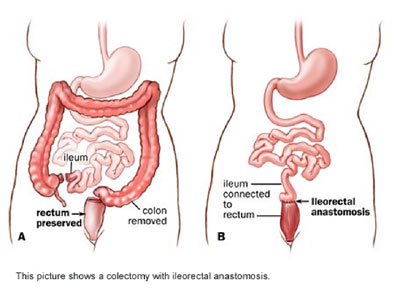Donations and HistoryHow has research over the years improved life with Polyposis?In the Polyposis Registry we have a firm belief that research should only be done if it is likely to lead to an improvement in patient care. The patients who come to St Marks will be the first to tell you that they have taken part in many research projects over the years and sometimes feel that they do not see the results. There are several reasons for this: results of individual studies may mean nothing on their own, sometimes changes are made that patients do not link to a particular study and sometimes the results tell us that it is better not to make a change. Listed below are some of the changes that have happened as a result of research carried out since 1924. 1924 1940s: careful records of family histories showed that in most families there was a 50:50 chance of inheriting the faulty gene and that it did not skip generations. 1948: first operation at St Marks to remove the large bowel and join the small bowel to the rectum. This operation is a colectomy with ileo rectal anastomosis and is commonly known as an IRA. The surgeon who did this operation, Mr OV Lloyd Davies, was criticised by some of his colleagues, who said that cancer would inevitably develop in the rectum, and so the operation was considered experimental.  1958: having kept careful records for the previous ten years of all the patients who had an IRA operation Dr Dukes made this statement: It would be difficult to find a more promising field for the exercise of cancer control than a polyposis family, because both diagnosis and treatment are possible in the precancerous stage and because the results of surgical treatment are excellent. 1950s: the call up programme began in which children who had a parent with polyposis were advised to attend hospital for an examination to see if they had polyps prior to symptoms. Before the NHS provided free health care, and before the IRA was available, patients only went to hospital when they had symptoms such as diarrhoea or bleeding. Once the condition was this advanced, over half of them would already have bowel cancer. 1950s: improvements in pathology showed that there is more than one type of polyposis. They are now called: familial adenomatous polyposis (FAP); Peutz Jeghers Syndrome (PJS) and juvenile polyposis syndrome (JPS). Much later, in 2003, a new gene causing a condition known as MYH associated polyposis (MAP) was found. In those early days, St Marks Hospital was supported by voluntary contributions but today it is, of course, part of the National Health Service (NHS). The NHS does not, however, support research into polyposis. The money for this comes from charities such as Cancer Research UK and the St Marks Hospital Foundation. The Polyposis Registry is funded by voluntary contributions - please support us by donating here. |
| E-Mail: [email protected] | Phone: +44 (0) 20 8235 4270 | Fax: +44 (0) 20 8235 4278 |